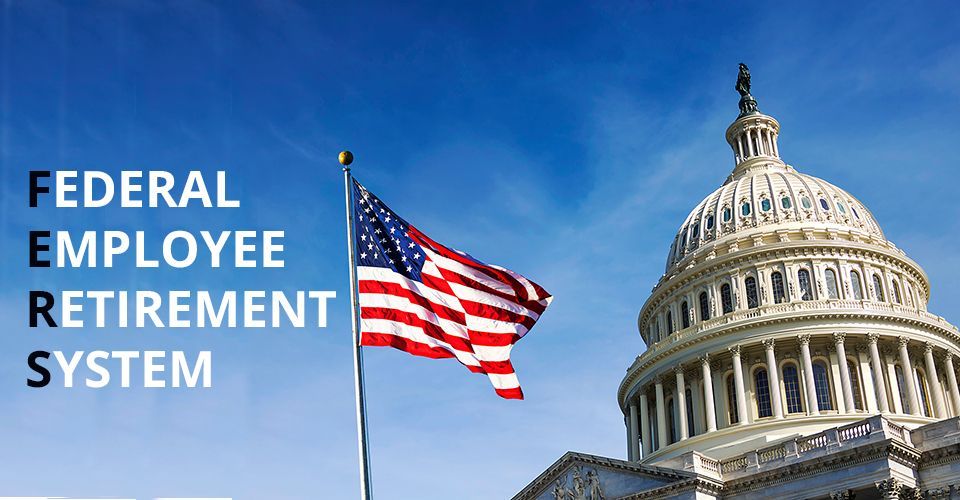Charting Your Course: How to Best Use Your Federal Employee TSP in Retirement

As a federal employee, you have access to one of the most powerful retirement savings tools: the Thrift Savings Plan (TSP). The TSP is a cornerstone of retirement planning for federal employees. Managed by the Federal Retirement Thrift Investment Board, the TSP offers federal employees a tax-advantaged way to save for retirement with employer matching contributions and a variety of options. However, simply contributing to your TSP isn't enough to secure a comfortable retirement. And once you reach retirement, navigating how to best utilize your TSP can feel overwhelming.
To make the most of your TSP in retirement, you need a strategic plan. Let's delve into some key strategies for maximizing your TSP in retirement based on the most recent information from the U.S. Office of Personnel Management (OPM).
TSP Before You Retire
New Paragraph
While you’re still an active participant in the federal workforce, there are things you can do to maximize your TSP retirement benefit. Here are just a few of them:
- Start Early and Contribute Consistently: One of the most effective strategies for building a robust retirement nest egg is to start early and contribute consistently to your TSP. Take advantage of the power of compounding by contributing a portion of your salary to your TSP from the beginning of your federal career. Even modest contributions can grow significantly over time, especially with the benefit of compound interest.
- Maximize Employer Matching Contributions: If you're eligible for employer matching contributions, make sure to contribute enough to your TSP to receive the maximum match. Employer matching contributions are essentially free money that can significantly boost your retirement savings. Be sure to understand the matching policy. If you’re a FERS, you should receive contributions on the first 5% of pay you contribute. The first 3% is matched dollar-for-dollar. The next 2% is matched at 50 cents/dollar. Always take full advantage of this valuable benefit.
- Diversify Your Investments: The TSP offers a range of options, including various stock and bond funds. Diversifying your investments can help spread risk and potentially enhance returns over the long term. Consider allocating your TSP contributions across different asset classes based on your risk tolerance, time horizon, and goals. Regularly review and adjust your allocations as needed to maintain an appropriate balance and mitigate risk as you approach retirement.
- Consider Lifecycle (L) Funds: If you prefer a hands-off approach to managing your investments, consider investing in Lifecycle (L) Funds offered by the TSP. These funds are designed to automatically adjust your asset allocation based on your target retirement date. As you get closer to retirement, the L Funds gradually shift towards a more conservative mix, reducing exposure to market volatility. Here is a review of its fund options to consider:
- Target Date Approach: Each TSP lifecycle fund is named according to the approximate year in which you plan to begin withdrawing the funds. For example, the L 2050 Fund is for those expecting to retire around the year 2050. The funds are allocated across a mix of TSP's core investment options (G, F, C, S, and I funds) based on the target retirement date.
- Income Fund: The income fund, also known as the G Fund, is one of the investment options within the TSP. It is a government securities investment fund that is nonmarketable and backed by the U.S. government. The G Fund provides a stable return with low risk compared to other funds in the TSP, making it suitable for investors with a shorter time horizon or those seeking stability.
- Five-Year Checkup: The TSP encourages participants to periodically review their investment strategy, especially as retirement approaches. Every five years, it's recommended to reassess your risk tolerance, investment goals, and retirement timeline. This checkup allows participants to adjust their investment allocations if needed to align with their evolving financial needs and circumstances.
Choosing the L Fund that corresponds to your expected retirement date can provide a convenient and effective way to manage your TSP investments over time. To better understand TSP funds, read our blog article "Options For Allocating Within the TSP."
- Monitor and Rebalance Your Portfolio: Regularly monitor the performance of your TSP investments and rebalance your portfolio as needed to maintain your desired asset allocation. Market fluctuations and changes in your personal circumstances may necessitate adjustments to your strategy. Rebalancing involves selling assets that have performed well and reinvesting the proceeds in underperforming assets to realign your portfolio with your target allocation. By staying vigilant and proactive, you can ensure that your TSP investments remain aligned with your retirement goals.
Age 50 and Counting: Things to Consider as You Approach Retirement
By age 50, most federal employees realize that their retirement date is fast approaching. As your retirement date draws near, there are some things you’ll need to consider to get the most out of your federal retirement benefits.
- Plan Your Withdrawal Strategy: As you approach retirement, it's important to develop a thoughtful withdrawal strategy for your TSP funds. Consider factors such as your anticipated retirement income needs, tax implications, and potential longevity risk. Within TSP, you can choose from various withdrawal options, including periodic payments, systematic withdrawals, or annuities. Evaluate each option carefully and select the one that best suits your individual circumstances and financial objectives. Keep in mind that once you reach age 73, you'll be required to take minimum distributions from your TSP account, so factor this into your retirement planning. As of January 1, 2033, the minimum distribution start age will increase to age 75. Also, be aware that these are only withdrawal strategies for TSP. There are other options available. To discuss other options, you should set up an appointment with a Federal Retirement Expert coach, who can provide a full strategy as well as an analysis report at no charge that charts your course into retirement.
- Understand Tax Implications: Withdrawals from your TSP account are subject to federal income tax, with the exception of qualified Roth contributions and earnings. It's crucial to understand the tax implications of your withdrawal decisions and consider strategies to minimize your tax burden in retirement. For example, you may choose to spread out withdrawals over multiple years to stay within lower tax brackets or explore options for tax-efficient withdrawal sequencing. Consult with one of our retirement coaches to develop a tax-efficient withdrawal strategy tailored to your specific circumstances.
- Explore TSP Loan Options with Caution: While the TSP allows participants to take loans against their account balances, this should be approached with caution, especially as you are near retirement. Borrowing from your TSP can have significant implications for your long-term retirement savings, including potential tax consequences and lost fund growth. Before taking a TSP loan, carefully consider alternative sources of funding and the impact on your overall retirement plan.
- Review and Adjust Your Plan Regularly: Retirement planning is not a one-time event but an ongoing process that requires periodic review and adjustment. Life circumstances, financial markets, and regulatory changes can all impact your retirement outlook and TSP strategy. Regularly review your retirement goals, fund performance, and withdrawal strategy to ensure that your TSP remains aligned with your evolving needs and objectives.
- Stay Informed and Seek Guidance: The world of retirement planning and fund management is complex and ever-changing. Get educated about retirement planning principles,fund strategies, and potential pitfalls to make informed decisions about your TSP and overall financial future. Stay informed about developments affecting your TSP account and seek retirement planning resources and guidance from reputable retirement professionals. We recommend getting connected with one of our retirement coaches, who are benefit experts that can provide the guidance and information you need.
Understanding Your TSP Options as You Retire
Reaching retirement signifies a shift in your TSP strategy. Previously, your focus may have been on long-term growth. Now, you'll prioritize income generation and preserving your principal. The good news is, the TSP offers several distribution options to meet your needs:
- Full Withdrawal: You have the option to withdraw your entire account balance as a lump sum. However, this can trigger significant tax implications and may not be the best strategy for long-term income security. To review TSP withdrawal options, visit TSP's Withdrawals in retirement page.
- Regular Monthly Payments: This option allows you to receive a set monthly payment from your TSP account. You can choose a fixed amount or a percentage of your account balance.
- Annuity Option: Convert all or part of your TSP account balance into an annuity, which guarantees you a fixed monthly income for life (or the joint life of you and your spouse).
- Partial Withdrawals: Take out specific amounts as needed, allowing for flexibility while preserving a portion of your savings.
Choosing the Right Distribution Strategy
The "best" distribution strategy depends on your individual circumstances. Consider these factors:
- Your age and life expectancy: If you have a longer life expectancy, you may prioritize preservation by leaving a portion of your TSP invested for growth.
- Other sources of income: Factor in your Social Security benefits, pension (if applicable), and any other income sources to determine how much income you need your TSP to generate.
- Risk tolerance: Regular monthly payments or annuities provide a guaranteed income stream. Partial withdrawals allow for more flexibility but require managing your portfolio.
- Financial goals: Do you plan on making a large purchase soon? This may influence your decision on how much to withdraw initially.
Maximizing Your TSP in Retirement
- Retirement Age Distribution: When comparing Required Minimum Distributions (RMDs) at age 72 with the intention of leaving money to family as a legacy, several factors come into play including investment strategy, tax implications, distribution strategy, estate planning, tax-advantaged gifting, and more. While RMDs provide a structured framework for retirement account withdrawals, your strategy for leaving money to family as a legacy may involve considerations beyond simply meeting these requirements.
Age 59½ is an important age to remember in retirement planning because it marks the age at which you can generally withdraw funds from your TSP account without being subject to the early withdrawal penalty of 10%. Before age 59½, withdrawals from the TSP may incur this penalty unless you qualify for certain exceptions. If you’re looking to leave a legacy to your family, we recommend getting connected with one of our retirement coaches, who can explain your options. - Tax-Efficient Withdrawals: Withdrawals from your traditional TSP are taxed as ordinary income. If you have a Roth TSP, qualified withdrawals are typically tax-free. Consider using a combination of traditional and Roth TSP withdrawals to minimize your tax burden.
- Reallocate to Your Life-Cycle: As you transition to retirement, consider transitioning a portion of your TSP into lifecycle funds or target-date funds that become more conservative as you age.
TSP is a valuable retirement savings tool for federal employees, offering tax-advantaged savings and a range of fund options. By following these strategies and being proactive in managing your TSP account, you can maximize its effectiveness in supporting a financially secure retirement. Start early, contribute consistently, diversify your funds, and stay informed about your options. With careful planning and prudent decision-making, you can make the most of your federal employee TSP in retirement and enjoy the peace of mind that comes with financial security in your golden years.
What Should You Do After Age 50? Talk to a Retirement Coach
Your TSP plays a crucial role in securing your financial future in retirement. By understanding your distribution options, choosing the right strategy, and utilizing available resources, you can maximize your TSP benefits and create a comfortable and secure retirement.
There is a lot of information to review and consider before you retire, especially when it comes to a federal employee retirement. Right now, the best thing is to get connected to a retirement expert who knows the ins and outs of federal benefits such as TSP.
Seek No-Cost Professional Guidance from Federal Retirement Experts
Again, our retirement coaches specialize in federal employee retirement benefits. Not only can they explain all facets of your TSP and other benefits, they can also provide you with a personalized pre-retirement report that’s based on your specific circumstances and risk tolerance. They can help you pre-plan for retirement as well as be an asset for you during retirement.
To get connected to a retirement coach, request a 30-minute discovery meeting and claim your complimentary pre-retirement report.
More Featured Articles









